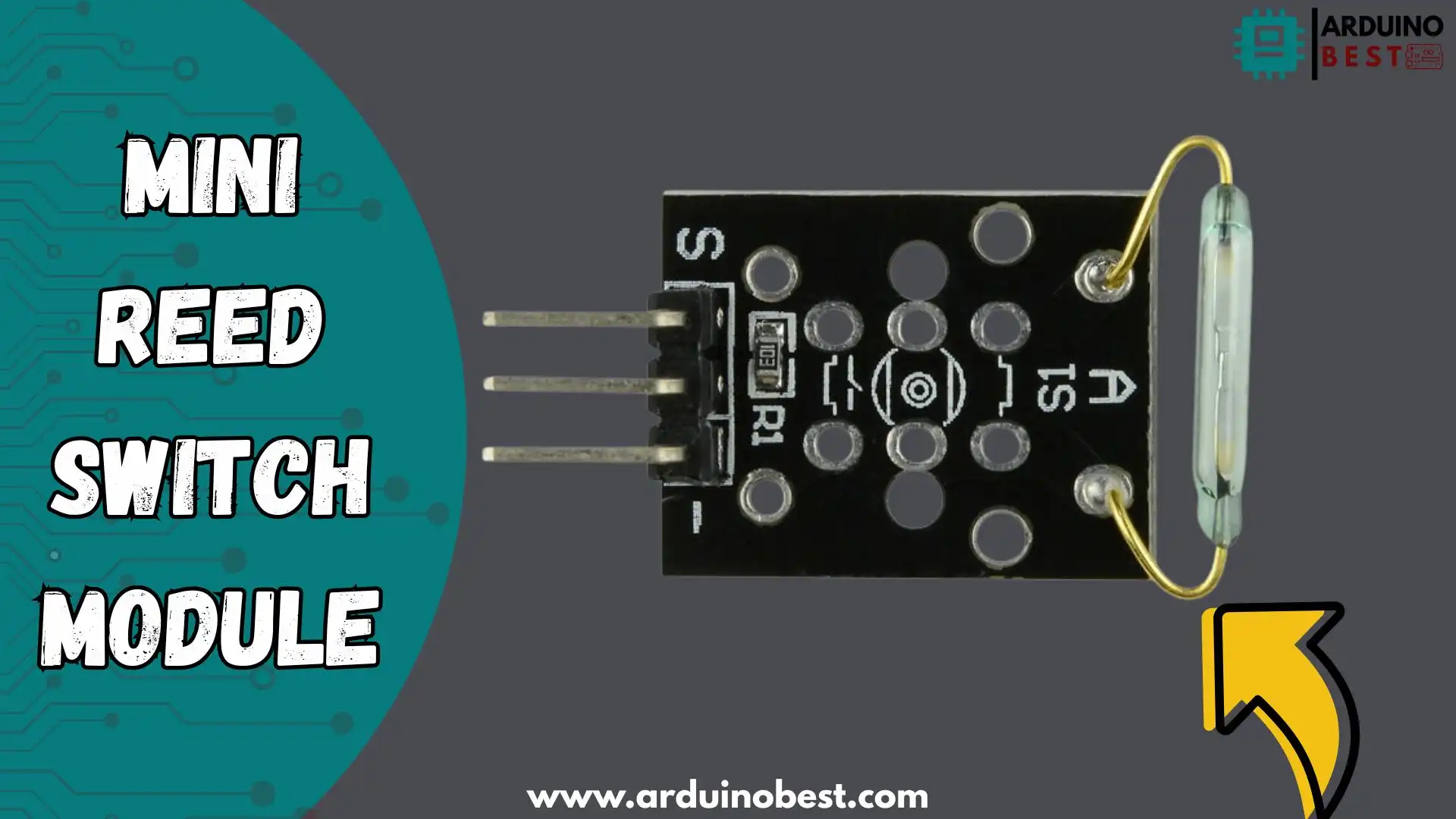Table of Contents
Introduction
In the realm of electronic components, the mini reed switch module stands out as a pivotal sensor for detecting magnetic fields. Its compact design and straightforward operation make it a favorite among hobbyists and professionals alike. This guide delves into the intricacies of mini reed switch modules, exploring their structure, functionality, applications, and integration techniques.
Understanding Reed Switches
A reed switch is an electrical switch operated by an applied magnetic field. It consists of two ferrous metal contacts sealed within a glass envelope. When exposed to a magnetic field, these contacts either close (normally open configuration) or open (normally closed configuration), thereby completing or breaking an electrical circuit. This mechanism allows reed switches to act as reliable proximity sensors in various applications.Keszoox+2ArduinoModulesInfo+2Microcontrollers Lab+2circuitmagic.com+2Cytron Technologies+2Makerfabs+2circuitmagic.com+1circuitmagic.com+1
Anatomy of a Mini Reed Switch Module
The mini reed switch module typically comprises:ArduinoModulesInfo
- Reed Switch: The core component that responds to magnetic fields.
- Resistor: Often a 10kΩ resistor is included to pull up the signal line, ensuring stable output.Wiltronics+3ArduinoModulesInfo+3Robot Pi Shop+3
- PCB with Header Pins: Facilitates easy connections to microcontrollers and other circuits.
These modules operate within a voltage range of 3.3V to 5V, making them compatible with various microcontrollers like Arduino and ESP32. ESP32 Hub
How Mini Reed Switch Modules Work
When a magnetic field approaches the reed switch, the internal contacts actuate:Hackster+5Cytron Technologies+5Makerfabs+5
- Normally Open (NO) Configuration: Contacts close in the presence of a magnetic field, completing the circuit.MagneLink, Inc.+21sensorkit.joy-it.net+21Keszoox+21
- Normally Closed (NC) Configuration: Contacts open when a magnetic field is present, breaking the circuit.Electrical Engineering Stack Exchange
This simple yet effective mechanism allows the module to detect the presence or absence of magnetic fields with high reliability.circuitmagic.com
Applications of Mini Reed Switch Modules
Mini reed switch modules find applications in numerous fields:
- Security Systems: Utilized as door and window sensors to detect unauthorized access.
- Consumer Electronics: Employed in devices like smartphones and laptops to detect lid positions.
- Automotive Industry: Used in gear position sensors and odometers.
- Medical Devices: Integrated into equipment like pacemakers for position sensing.
- Industrial Machinery: Serve as position and limit sensors in automated systems.
Their versatility and reliability make them indispensable in modern electronic designs.
Integrating Mini Reed Switch Modules with Microcontrollers
Integrating a mini reed switch module with microcontrollers such as Arduino involves:
- Wiring: Connect the module’s power and ground pins to the microcontroller’s VCC and GND, respectively. Attach the signal pin to a digital input pin on the microcontroller.
- Programming: Write code to monitor the signal pin’s state, triggering desired actions upon detecting changes.
- Debouncing: Implement software or hardware debouncing techniques to ensure accurate readings, as mechanical switches can produce erratic signals when actuated.
For a detailed guide on setting up the Mini Reed Sensor module with Arduino, refer to this step-by-step tutorial.circuitmagic.com+1circuitmagic.com+1
Advantages of Using Mini Reed Switch Modules
The benefits of employing mini reed switch modules include:
- Low Power Consumption: Ideal for battery-operated devices.
- High Sensitivity: Capable of detecting weak magnetic fields.
- Compact Size: Suitable for applications with space constraints.
- Mechanical Durability: Long operational lifespan due to minimal mechanical wear.
Limitations and Considerations
While advantageous, certain limitations should be noted:
- Mechanical Sensitivity: Susceptible to damage from shock and vibration.
- Switching Speed: Not suitable for high-frequency switching applications.
- Environmental Factors: Performance can be affected by extreme temperatures and humidity.
Selecting the Right Mini Reed Switch Module for Your Project
Consider the following when selecting a module:SunFounder
- Voltage and Current Ratings: Ensure compatibility with your system’s requirements.
- Size and Form Factor: Choose a module that fits within your design constraints.
- Mounting Options: Determine if surface-mount or through-hole components are more suitable.
For instance, the KY-021 Mini Magnetic Reed Switch Module operates at 3.3V to 5V and is compatible with various microcontrollers. ArduinoModulesInfo+8ESP32 Hub+8ArduinoModulesInfo+8
Installation and Calibration
Proper installation involves:SunFounder+1YouTube+1
- Mounting: Secure the module firmly to prevent movement.
- Alignment: Position the magnet appropriately to ensure consistent actuation.
- Testing: Verify functionality by observing the module’s response to the magnetic field.
- Safety: Handle the glass encapsulated reed switch with care to avoid breakage.
Troubleshooting Common Issues
Common challenges include:
- False Triggering: May occur due to external magnetic interference.
- Contact Bounce: Implement debouncing techniques to mitigate erratic signals.
- Non-Responsive Module: Check wiring connections.
Conclusion
The mini reed switch module is a compact, reliable, and cost-effective sensor that plays a crucial role in various electronic and automation projects. Its ability to detect magnetic fields without direct contact makes it ideal for security systems, door sensors, robotic feedback, and smart home automation.
Thanks to its simplicity, the module is extremely easy to integrate with popular development platforms like Arduino, Raspberry Pi, and other microcontrollers. Whether you’re a beginner exploring basic sensor functionalities or an advanced developer creating complex automation systems, the mini reed switch module offers unmatched convenience and flexibility.
Understanding the working principle of reed switches, along with how to wire and code them correctly, opens up countless opportunities for experimentation and innovation. Their low power consumption and long operational life also make them a sustainable choice for embedded systems.
By incorporating this sensor into your designs, you not only improve functionality but also enhance safety and automation. For both hobbyists and professionals, the mini reed switch module remains an indispensable component in the toolkit of modern electronics.
Explore more projects and tutorials to unlock the full potential of magnetic sensing in your applications, and bring your DIY and IoT ideas to life with confidence.
Arduino Projects:
1- Complete Guide for DHT11/DHT22 Humidity and Temperature Sensor With Arduino
2- DHT11 – Temperature and Humidity Sensor
3- DHT22 – Temperature and Humidity Sensor (more accurate than DHT11)
4- BMP180 – Barometric Pressure and Altitude Sensor
5- BMP280 – Barometric Pressure & Temperature Sensor
6- BME280 – Temperature, Humidity, and Pressure Sensor
7- Arduino Flex Sensor Controlled Robot Hand
8- Arduino ECG Heart Rate Monitor AD8232 Demo
9- Arduino NRF24L01 Wireless Joystick Robot Car
10- Arduino Force Sensor Anti-Theft Alarm System
11- Arduino NRF24L01 Transceiver Controlled Relay Light
12- Arduino Rotary Encoder Controlled LEDs: A Complete Guide

